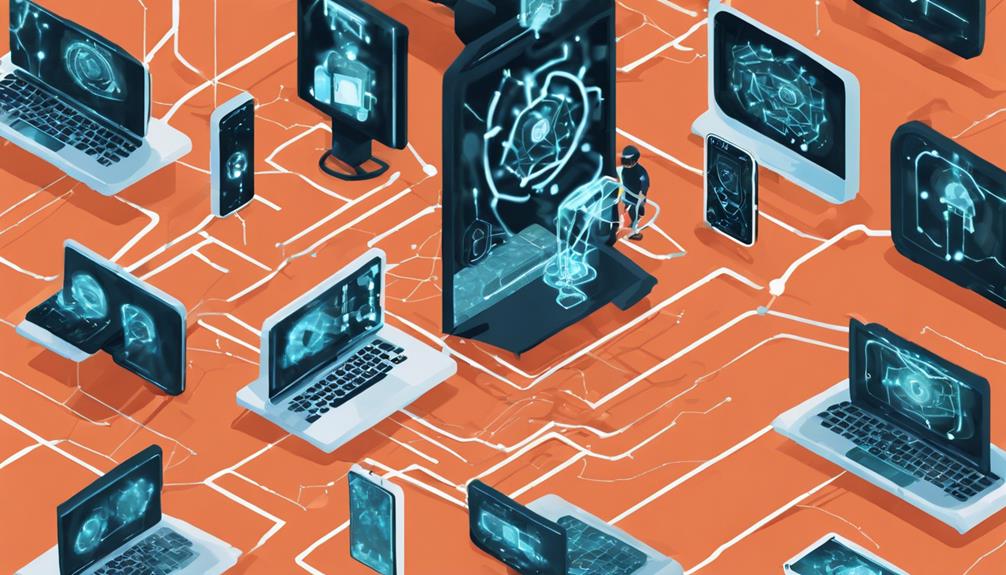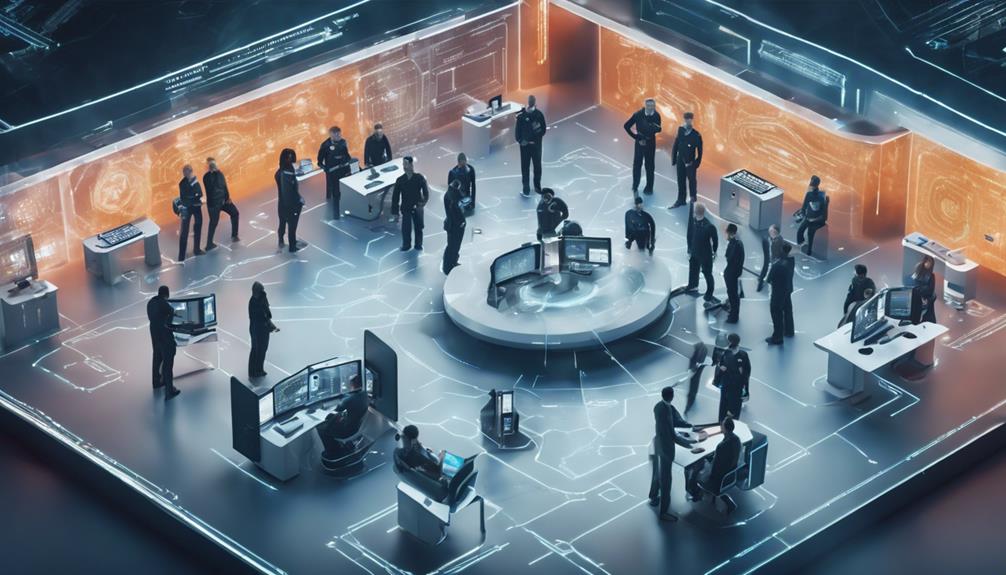AI enhances cybersecurity by boosting threat detection, proactive prevention, and access management. AI-driven machine learning algorithms analyze data in real-time and identify patterns swiftly. Identity and access management benefit from behavior-based controls, advanced authentication, and real-time risk assessment. Endpoint security solutions use AI for anomaly detection and automated responses for threat mitigation. Cloud security is bolstered with AI-driven threat detection and predictive analytics. Advanced AI techniques focus on anomaly detection, behavioral analytics, and incident investigation automation. AI in cybersecurity guarantees improved threat responses, data privacy, and advanced security solutions. These applications offer a glimpse into the transformative power of AI.
Key Takeaways
- Real-time threat detection and prevention through machine learning.
- Behavior-based access controls with AI for enhanced security.
- AI-powered privileged access monitoring for detecting suspicious activities.
- Anomaly detection and swift threat mitigation using AI.
- Advanced cloud security measures with AI-driven threat detection.
Threat Detection and Prevention
Enhancing cybersecurity measures, AI plays a pivotal role in threat detection and prevention through its ability to analyze vast amounts of data in real-time. By leveraging machine learning algorithms, AI can efficiently identify patterns and anomalies within the data to detect new and evolving cyber threats. This proactive approach enables AI to monitor network traffic, user behavior, and system anomalies, allowing for the swift identification of potential security breaches before they escalate.
Moreover, Generative AI technology further enhances threat analysis by generating new content based on existing data, enabling organizations to predict and prevent cyber attacks effectively. Real-time threat prevention is also a noteworthy benefit of AI-powered network monitoring systems, which can track and respond to potential threats without disrupting normal operations.
With AI at the forefront of threat detection and prevention, organizations can significantly bolster their cybersecurity defenses against a constantly evolving landscape of cyber threats.
Identity and Access Management

In the domain of cybersecurity, enhancing user authentication, implementing behavior-based access controls, and monitoring privileged access are vital aspects of identity and access management.
These points underscore the significance of leveraging AI technologies to strengthen security measures and protect sensitive data from unauthorized access.
User Authentication Enhancements
By leveraging AI technology, advancements in user authentication within Identity and Access Management (IAM) systems have greatly enhanced cybersecurity measures. AI plays an essential role in analyzing behavior patterns, keystroke dynamics, and biometric data to guarantee secure access. IAM systems powered by AI can swiftly detect anomalies, unauthorized access attempts, and potential insider threats, bolstering overall security.
Continuous authentication, enabled by AI algorithms, minimizes reliance on static credentials like passwords, thereby improving security measures to a large extent.
Furthermore, machine learning integrated into IAM solutions facilitates real-time risk assessment, adaptive access control, and personalized security measures. This not only enhances security but also improves the user experience by striking a balance between stringent security requirements and smooth access for authorized individuals.
AI-powered IAM solutions are at the forefront of the fight against cyber threats, offering a proactive approach to cybersecurity that adapts to evolving risks and provides robust protection for organizations and their sensitive data.
Behavior-Based Access Control
AI technology revolutionizes Identity and Access Management by enabling behavior-based access control through intelligent analysis of user actions and patterns. This approach involves user behavior analysis to detect unauthorized access attempts and insider threats, providing a proactive defense mechanism. Continuous monitoring of user activities allows for real-time adaptation of access controls, enhancing security by dynamically responding to evolving threats. Behavior-based access control reduces reliance on static rules and passwords, thereby bolstering cybersecurity posture and mitigating access-related risks effectively.
| Key Points | Importance |
|---|---|
| Unauthorized Access Detection | Early identification of potential threats |
| Insider Threats Mitigation | Proactive defense against internal risks |
| Access Controls Adaptation | Real-time response to changing security landscape |
Privileged Access Monitoring
Behavior-based access control in Identity and Access Management seamlessly leads to the critical aspect of Privileged Access Monitoring, where organizations leverage AI to detect suspicious activities by privileged users. By analyzing privileged user behavior, AI can identify anomalies and potential security breaches, enhancing security measures.
Through real-time alerts, AI-powered privileged access monitoring promptly notifies organizations of unauthorized access attempts, enabling swift response to mitigate risks. Additionally, AI automates the detection of risky privileged access patterns, facilitating the enforcement of security policies to bolster overall cybersecurity.
This proactive approach to privileged access monitoring not only strengthens identity and access management strategies but also safeguards critical systems and data from potential threats. By incorporating AI into privileged access monitoring, organizations can stay ahead of malicious actors and maintain a robust security posture in an ever-evolving digital landscape.
Endpoint Security Solutions

Utilizing cutting-edge machine learning algorithms, AI-powered endpoint security solutions detect and prevent advanced threats, providing organizations with a robust defense mechanism. By analyzing endpoint behavior in real-time, these solutions can swiftly identify anomalies and potential security risks before they escalate. One key advantage of AI in endpoint security is its automated response capabilities, enabling quick and efficient threat mitigation to protect devices across different platforms like desktops, laptops, and mobile devices effectively. These AI-driven tools empower organizations to bolster their cybersecurity posture proactively, ensuring a strong defense against the constantly evolving landscape of cyber threats.
| AI-Powered Endpoint Security Solutions | Key Features | Benefits |
|---|---|---|
| Machine Learning Algorithms | Detect and prevent threats | Enhanced threat detection capabilities |
| Real-time Analysis | Identify anomalies quickly | Rapid response to potential risks |
| Automated Response Capabilities | Swift threat mitigation | Efficient protection for all devices |
Cloud Security Measures
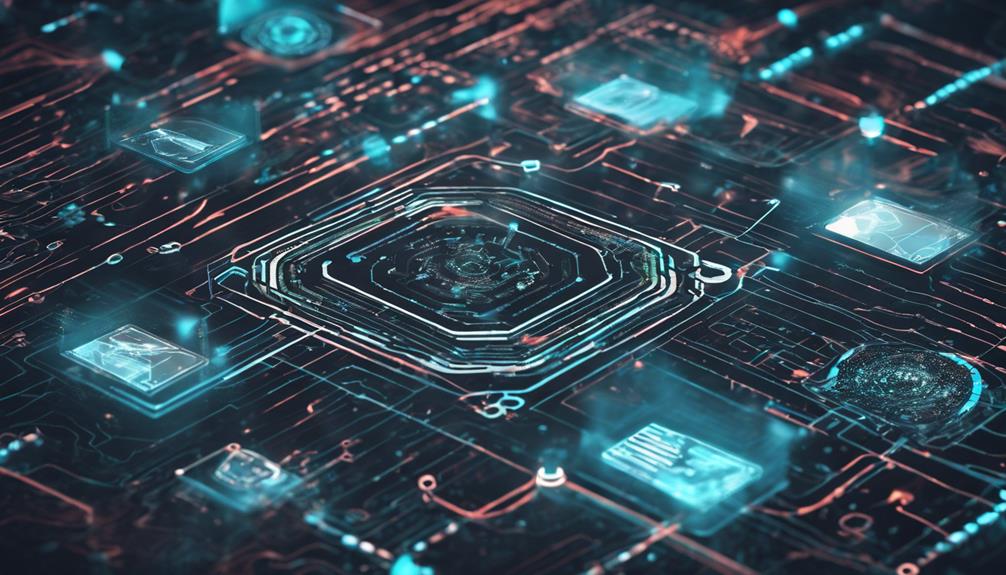
Cloud security measures play an essential role in safeguarding sensitive data and protecting cloud environments from potential cyber threats. AI tools are instrumental in enhancing cloud security through advanced capabilities such as threat detection, incident response, and adaptive security measures. Here's how AI contributes to strengthening cloud security:
- Real-Time Threat Detection: AI analyzes vast amounts of data to detect anomalies and potential threats in real-time, providing proactive security measures.
- Automated Incident Response: Machine learning algorithms in AI tools continuously monitor cloud environments, enabling prompt identification and response to security incidents to mitigate risks effectively.
- Predictive Analytics and Anomaly Detection: AI-driven solutions offer predictive analytics, behavior analysis, and anomaly detection to prevent cyberattacks and safeguard sensitive data effectively.
Additionally, tools like cloud security posture management (CSPM) platforms leverage AI to assist organizations in maintaining a robust security posture in their cloud environments.
Cyberthreat Detection Techniques
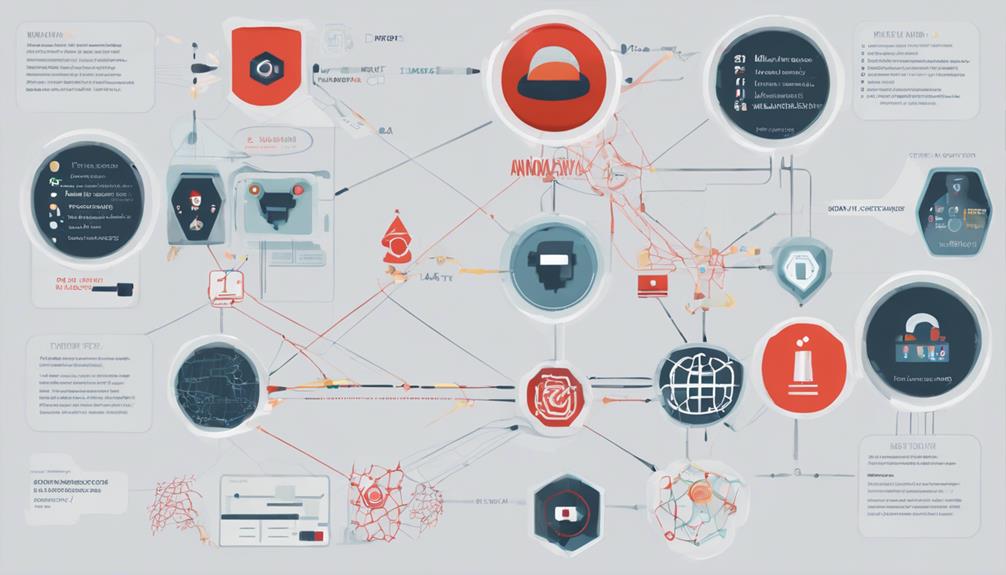
AI revolutionizes cyberthreat detection by leveraging advanced algorithms to detect anomalies and identify patterns in vast data sets. Machine learning within AI systems plays a vital role in recognizing new malware strains by comparing them to historical data, enhancing cybersecurity measures.
Additionally, AI's behavioral analytics capabilities enable proactive monitoring of user activities to pinpoint potential security threats before they escalate, providing a proactive approach to cybersecurity.
AI for Anomaly Detection
How can modern cybersecurity leverage advanced machine learning techniques to enhance anomaly detection and combat emerging cyber threats effectively?
AI in cybersecurity plays a pivotal role in detecting unusual or suspicious activities within networks through sophisticated anomaly detection techniques. Here's how AI-based anomaly detection enhances cybersecurity:
- Machine Learning Algorithms:
By utilizing machine learning algorithms, AI can analyze immense volumes of data to identify deviations from normal behavior patterns, making it adept at detecting suspicious activities.
- Detection of Advanced Threats:
AI-powered anomaly detection aids in pinpointing advanced persistent threats (APTs) and zero-day attacks that may go unnoticed by traditional security measures.
- Proactive Defense Measures:
Through learning normal user behavior patterns, AI can flag anomalies promptly, enabling organizations to take proactive defense measures and thwart potential security breaches effectively.
Incorporating AI for anomaly detection not only strengthens threat detection capabilities but also empowers organizations to stay ahead of cyber adversaries.
Behavioral Analytics With AI
Behavioral analytics with AI in cybersecurity enables the detection of abnormal user behavior indicative of potential cyber threats. By utilizing AI algorithms, behavioral analytics can analyze user activities and patterns in real time to pinpoint security risks and anomalies.
This approach, bolstered by machine learning capabilities, establishes normal behavior baselines and triggers alerts for any deviations that could signify a threat. Additionally, AI-powered behavioral analytics play an essential role in proactively identifying insider threats and sophisticated cyber attacks that might slip past traditional security measures.
Unlike signature-based detection methods, which focus on specific known threats, behavioral analytics with AI hones in on behavioral patterns, offering a more thorough and dynamic threat detection strategy. This advanced technique not only enhances security posture but also empowers organizations to stay one step ahead of cyber adversaries by detecting and mitigating potential threats before they escalate.
Information Protection Strategies

Effective information protection strategies play a pivotal role in safeguarding sensitive data from potential cyber threats. Leveraging AI-driven tools can greatly enhance these strategies by analyzing data patterns, classifying and encrypting sensitive data, and offering real-time monitoring to prevent data breaches.
Machine learning algorithms integrated into AI systems assist in identifying and securing sensitive information, ensuring that data access controls are automated and permissions are managed efficiently to uphold information security. Additionally, AI can aid in the development of proactive strategies that mitigate the risk of data leaks and potential threats before they materialize.
Incident Investigation Procedures

Utilizing advanced artificial intelligence technologies revolutionizes the efficiency and accuracy of incident investigation procedures in cybersecurity. AI automates incident investigation procedures by swiftly analyzing vast amounts of data in real-time. Machine learning algorithms play an essential role in this process, aiding in identifying patterns and anomalies during incident investigations. AI-driven tools streamline the task of correlating and analyzing security alerts, enabling organizations to respond more rapidly to potential threats, thereby achieving faster response times. Additionally, generative AI contributes by providing contextual information and valuable insights that enhance the overall understanding of incidents. By leveraging these AI capabilities, cybersecurity professionals can improve the accuracy and effectiveness of their incident investigation processes while reducing the manual workload involved in analyzing security incidents.
| Key Points | |
|---|---|
| AI automates incident investigation procedures | Machine learning algorithms help in identifying patterns and anomalies |
| AI-driven tools streamline correlating security alerts | Faster response times are achieved |
| Generative AI provides contextual information |
Benefits of AI in Cybersecurity
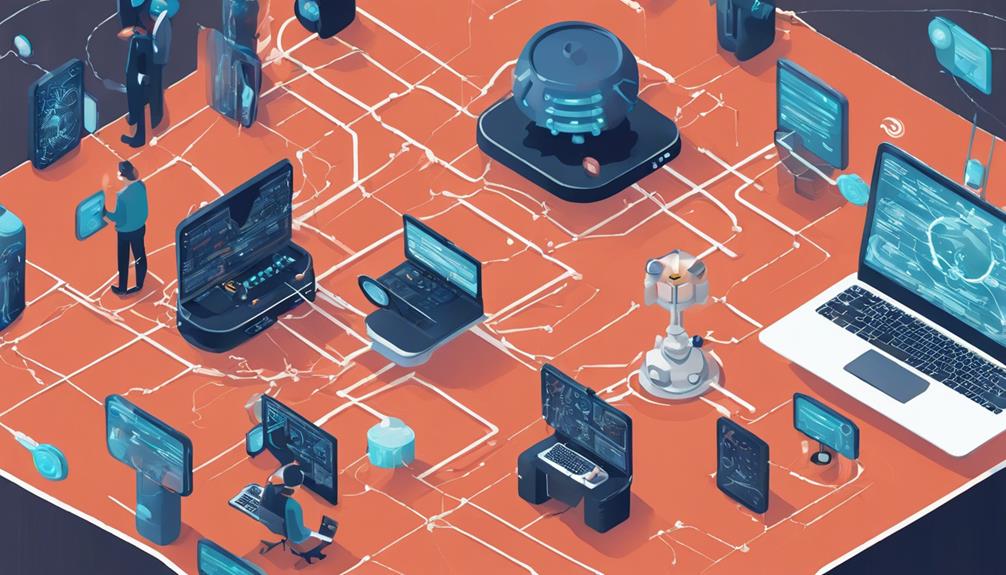
The integration of artificial intelligence (AI) in cybersecurity greatly enhances the overall defense capabilities against cyber threats. AI cybersecurity solutions offer a range of benefits, including:
Improved Threat Detection and Response:
AI uses machine learning to analyze vast amounts of data, enabling swift and accurate threat identification. This proactive approach enhances security measures, reducing incident response times and potential vulnerabilities.
Enhanced Data Privacy:
AI solutions can effectively monitor and safeguard data privacy by identifying unusual patterns or unauthorized access attempts. This helps organizations maintain the confidentiality and integrity of sensitive information.
Advanced Security Solutions:
AI-driven technologies, such as entity behavior analytics, provide organizations with robust security solutions. By automating tasks and integrating diverse data sources, AI enhances the ability to handle the complexity of modern cyber threats effectively. This empowers cybersecurity professionals to focus on strategic initiatives and critical tasks, ultimately bolstering overall security posture.
Frequently Asked Questions
How Does AI Help Cyber Security?
AI in cybersecurity bolsters defenses by analyzing data to detect threats efficiently, automating incident response for faster containment, and enabling proactive measures through predictive analytics. It enhances security by managing complexity and reducing professionals' workload.
How AI Can Play an Important Role in Cyber Ethics?
When maneuvering through the digital landscape, AI's role in cyber ethics is paramount. By promoting transparency, automating ethical decision-making, and upholding standards, AI can serve as a guardian of integrity and morality in cybersecurity practices.
What Are Some Concerns Using AI in Cybersecurity Applications?
Concerns regarding AI in cybersecurity applications include vulnerability to adversarial attacks, challenges with false positives and negatives in threat detection, lack of transparency in decision-making processes, reliance on quality training data, and ethical implications in decision-making capabilities.
How Can Generative AI Be Used in Cybersecurity?
Just as an artist's palette creates endless possibilities, generative AI in cybersecurity crafts simulated attacks, models threats, and fortifies defenses. Enhancing threat intelligence, it aids in proactive mitigation and vulnerability identification.
Conclusion
To sum up, the integration of AI in cybersecurity offers numerous benefits, including enhanced threat detection, improved incident investigation, and strengthened information protection.
According to a recent study by Capgemini, 69% of organizations believe that AI is essential for responding to cyber threats effectively.
By leveraging AI technologies in key applications such as threat detection and prevention, identity and access management, and cloud security measures, organizations can better protect their systems and data from cyberattacks.
